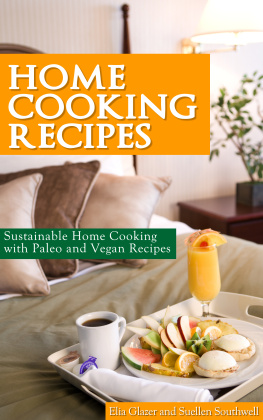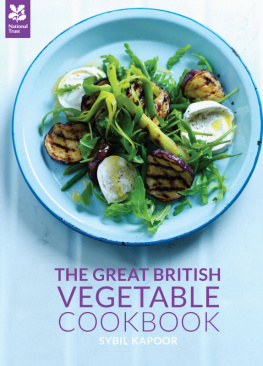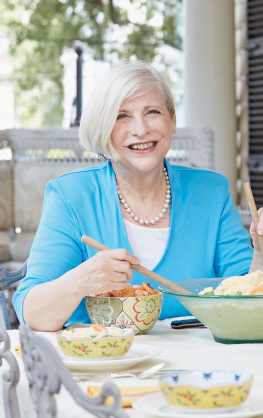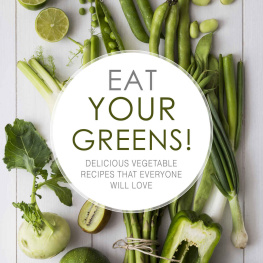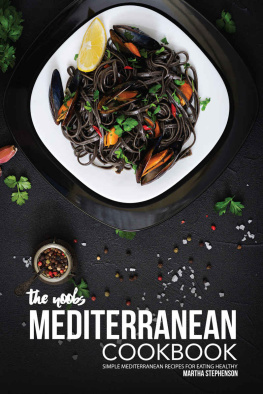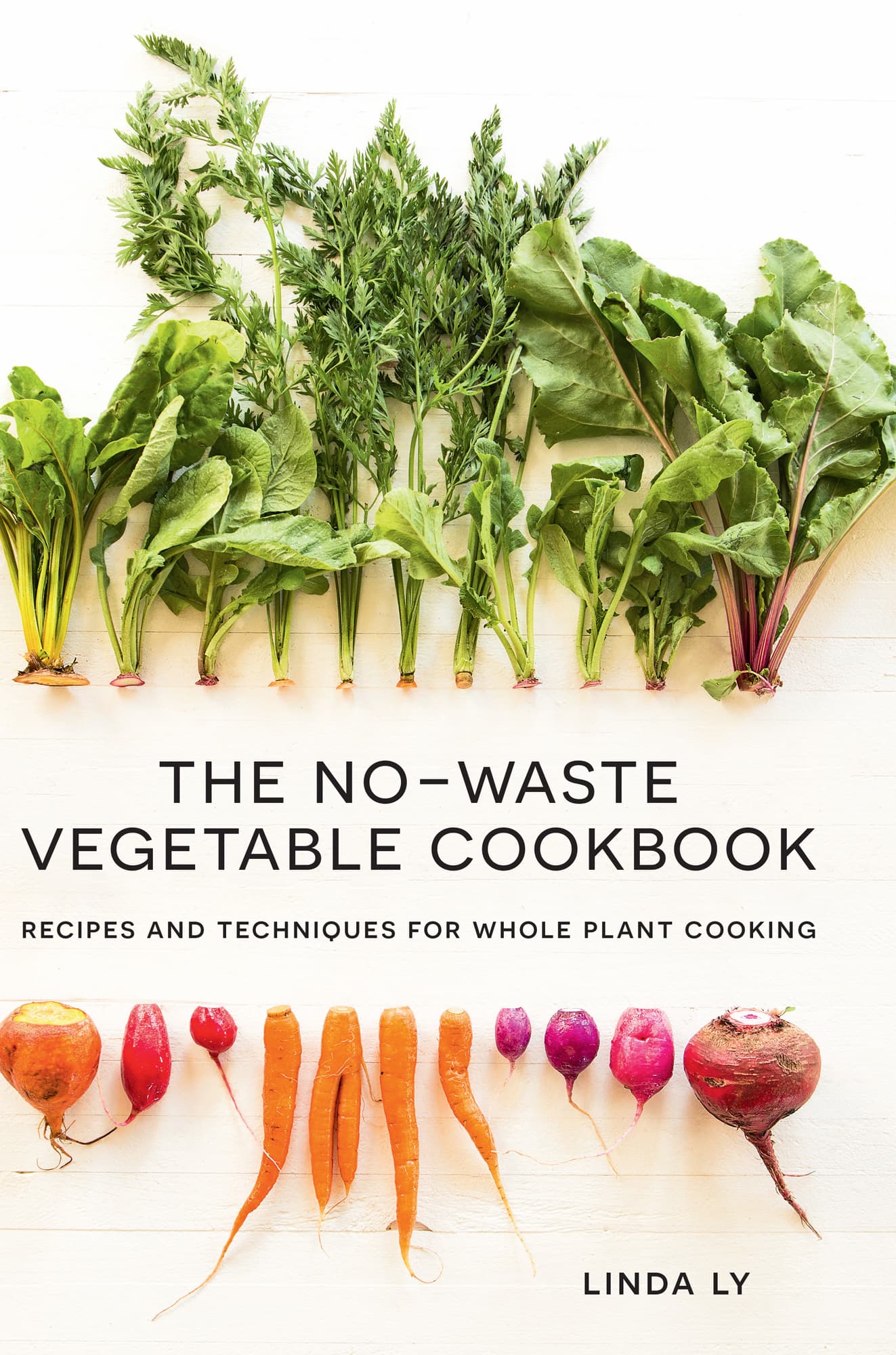THE NO-WASTE VEGETABLE COOKBOOK
RECIPES AND TECHNIQUES FOR WHOLE PLANT COOKING
LINDA LY
PHOTOGRAPHY BY WILL TAYLOR


2020 Quarto Publishing Group USA Inc.
Text 2015, 2020 Linda Ly
First Published in 2020 by The Harvard Common Press, an imprint of The Quarto Group,
100 Cummings Center, Suite 265-D, Beverly, MA 01915, USA.
T (978) 282-9590 F (978) 283-2742 QuartoKnows.com
All rights reserved. No part of this book may be reproduced in any form without written permission of the copyright owners. All images in this book have been reproduced with the knowledge and prior consent of the artists concerned, and no responsibility is accepted by producer, publisher, or printer for any infringement of copyright or otherwise, arising from the contents of this publication. Every effort has been made to ensure that credits accurately comply with information supplied. We apologize for any inaccuracies that may have occurred and will resolve inaccurate or missing information in a subsequent reprinting of the book.
The Harvard Common Press titles are also available at discount for retail, wholesale, promotional, and bulk purchase. For details, contact the Special Sales Manager by email at or by mail at The Quarto Group, Attn: Special Sales Manager, 100 Cummings Center, Suite 265-D, Beverly, MA 01915, USA.
Digital edition: 978-1-55832-998-0
Hardcover edition: 978-1-55832-997-3
Digital edition published in 2020
The content in this book was previously published in The CSA Cookbook, by Linda Ly (Voyageur Press 2015).
Previously cataloged under the following Library of Congress Control Number: 2014952944
Design: Amy Sly
Cover Image: Will Taylor
Page Layout: Sporto
Photography: Will Taylor
To Ember Luna, our fiery and adorable new addition, and Gemma Lumen, our star light.
It seemed impossible to love two children with the same intensity that we felt for one, but both of you have opened up the deepest parts of our hearts that we didn't know existed and filled them with so much joy, passion, purpose, and vulnerability. Our hope is that you grow up surrounded with love and laughter, inspired by your journeys and adventures, and possessed with the courage and strength to chase after your dreams.
PREFACE
Growing up in an Asian household, Ive seen and eaten my share of somewhat strange foods: pepper leaves, pea shoots, kale flowers, and sweet potato vines, not to mention the nose-to-tail portions of nearly every animal that appeared on my plate. Of course, they didnt seem strange to me at the time; they were just whats for dinner. Most of our meals were vegetable-centric, due in part to a sense of thrift and the food culture in my familys homeland. In their belief that no food should ever be wasted (Because there are children starving in Vietnam! theyd say), my family fully utilized every part of the plant they brought home from the market.
This was all before the back-to-the-land movement in urban backyards and the farm-to-table trend in upscale restaurants. We were eco-friendly before it was even a thing, and its not that we were especially ahead of our time. My parents lived through war-era Vietnam, where supplies were scarce. Since refrigeration was a luxury, they shopped as needed, every day, from one of the many farm stalls down the street.
Food was always fresh, because that was the only way my parents knew how to cook and eat. They couldnt afford a microwave in the early days of life in America, so they cooked the old-fashioned way: on a stove, with a bevy of pots and pans. Even after a long day at work, my mom and dad would dutifully prepare dinner as a way to wind down and catch up with each other; many a chatter and debate was had in the kitchen over a sink full of salad greens.
I envied our neighbors who served up quick, tidy meals made from cans and boxes. Meanwhile, we were meticulously rinsing rice, washing herbs, chopping vegetables, and steaming whole fish, head and all. Everyone took part in the prepping as a nightly ritual, and nothing was wasted.
Coming from a culture where food was a celebration of life and meat was a special-occasion splurge, my family sat down every night to home-cooked meals that consisted of one part meat and three parts vegetables, long before former First Lady Michelle Obama ever promoted a new food pyramid that encouraged something similar.
I was taught to eat everything off my plate (because there are children starving in Vietnam, of course) and taught that all parts of the plant were one and the samethat the roots, stems, leaves, flowers, and seeds were equally precious. Whenever I tried to wiggle my way out of eating, say, Chinese broccoli stalks, my mom would remind me that [insert random palnt part here] was b, or nutritious. According to her, every vegetable was good for treating or curing an ailment, whether it be the common cold or high cholesterol. (It wasnt until decades later that I finally realized Mom was rightfood is medicine.)
I cant say I really appreciated any of that as a kid, which is probably true of a lot of first-generation Asian-American kids. I rebelled against the horror that was homemade food and complained about the time it took to prepare a meal when pizza was just a phone call away. I even tried to trade lunches at schoolbut who would want a bnh m, a Vietnamese baguette filled with pt, pickles, and herbs, over a PB&J made with Wonder Bread, Skippy, and Smuckers?
In spite of it all, fresh whole food was what Id always known. It was familiar and, well, it was made for me and made with love. I ate whatever my parents put on the tablethings that other people thought were exotic, but for me was just another trip down the Asian grocery aisles. Bags of pea sprouts and bundles of budding garlic chives were as ho-hum as a head of cabbage.
It wasnt until after college, when I started paying more attention to food and learning how to cook for myself, that I realized how much of it is often wasted in the American kitchen. Wandering the produce aisle of the local grocery store, I would see sad bunches of greens attached to beets and neatly bundled leeks with dark green leaves that looked like an afterthought. Many of my friends didnt even know you could eat radish tops, let alone carrot tops. It seemed like half the vegetables you purchased went straight to the trash or, at best, made for some rather expensive compost. For someone whose childhood dinner rotation included stems and shoots and other trash, it was startling and eye-opening.


